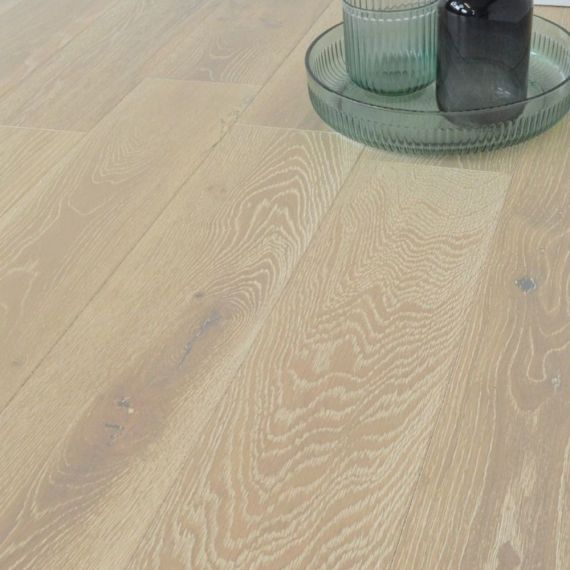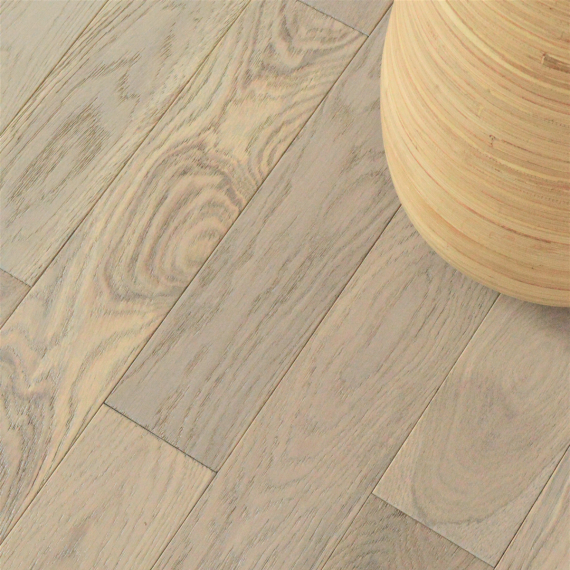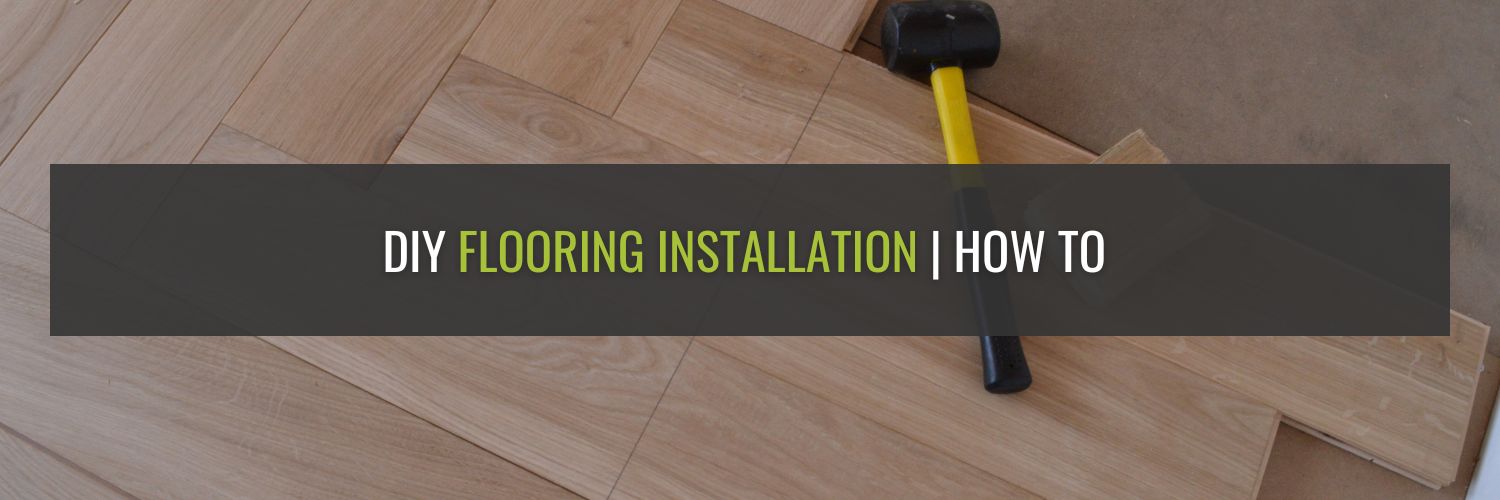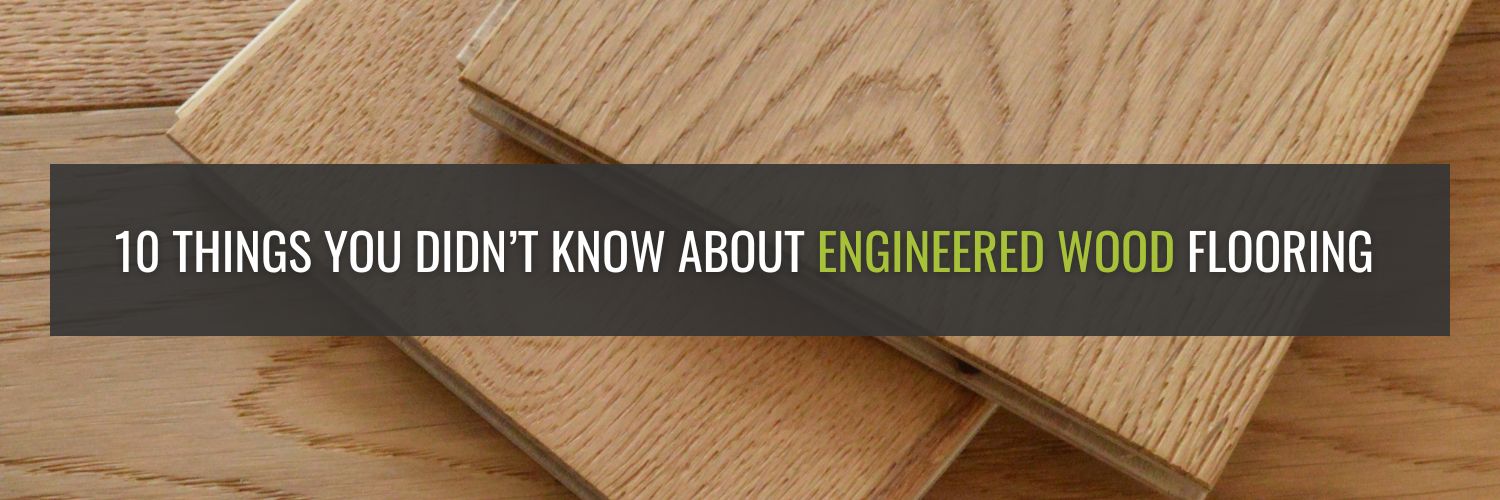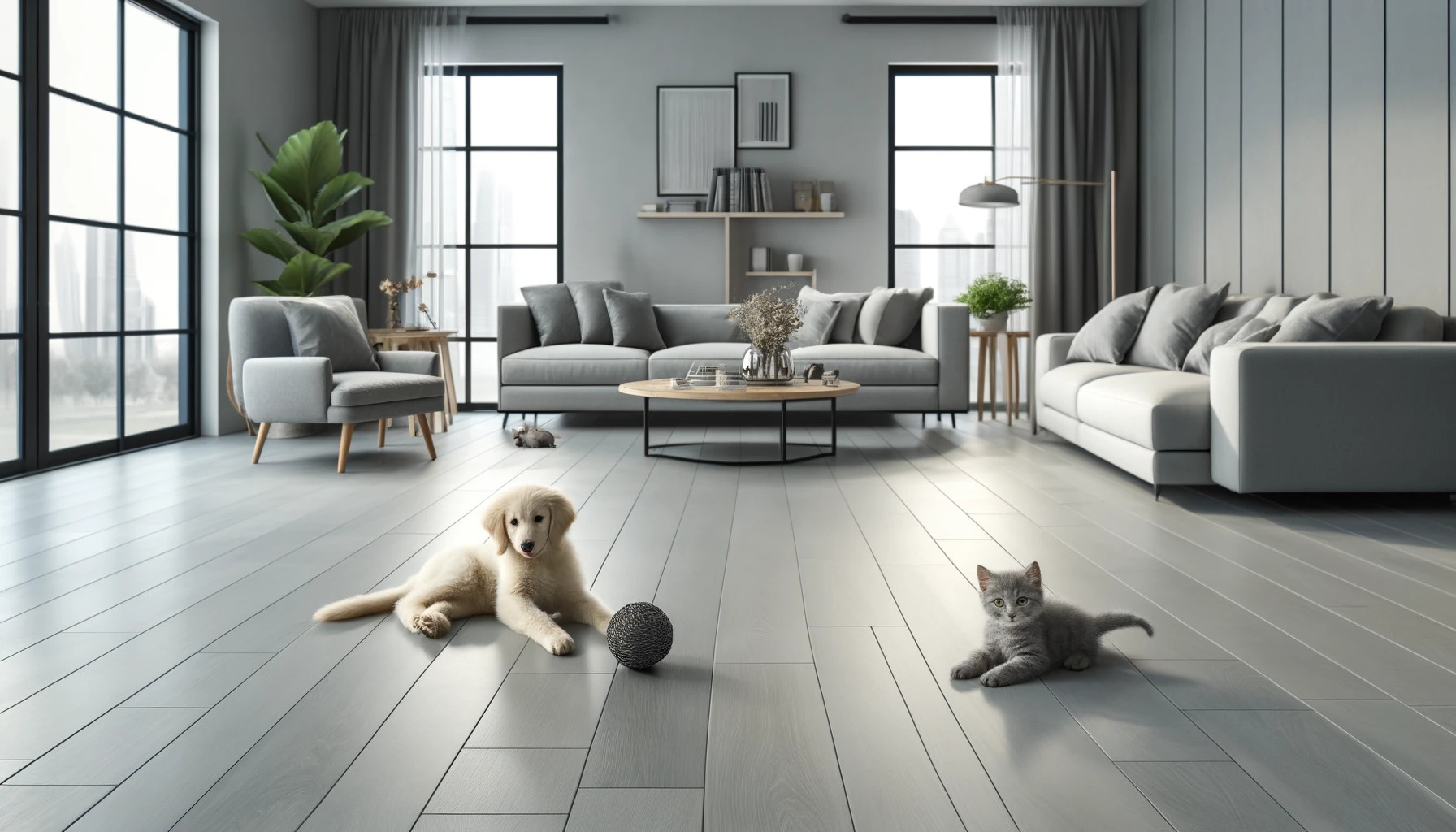Engineered Wood Flooring Vs Solid Wood Flooring | Which Is Best?
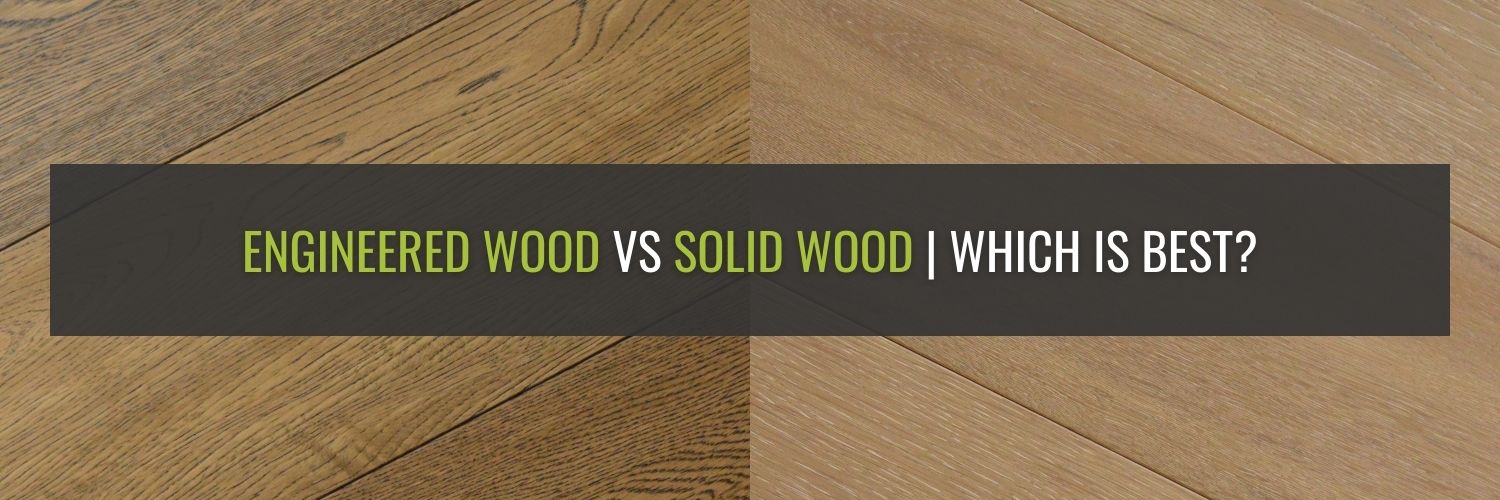
Can't Decide Between Engineered or Solid Wood Flooring? Don't Worry, Our Latest Blog Can Help…
If you’re thinking about new flooring for your home and looking for something that’s super high quality, with a real wood finish and texture, the chances are, you’ve probably narrowed it down to two options; Solid Wood and Engineered Wood flooring.
With both offering a massive choice of finishes, styles, and wood types, there’s definitely a range out there for you, regardless of the look you’re going for, but with both having seemingly endless options and many similarities, how do you know which is better for you? Our latest guide looks at the key differences between both, but first, let’s take a look at the basics...
What Is Solid Wood Flooring
Solid Wood Flooring is the nearest thing to a totally natural product you can choose for your home, made entirely of a single species of wood, cut, shaped, and sanded to size.
It’s usually fitted using a tongue and groove method (requiring glueing, in most cases) and available in several different wood species, lengths, widths, and finishes; such as brushed, lacquered, or oiled, meaning there’s probably a style that suits you.
Although it does usually require a little more preparation and long-term maintenance, it’s a popular choice for all house types, including busy family homes, as people look for ‘authentic’ wood flooring that’s as true to the original wood as possible.
What Is Engineered Wood Flooring
Engineered Wood Flooring, in comparison to Solid Wood, is a relative newcomer in the market, but it’s quickly becoming one of our best sellers, and with good reason!
Engineered flooring is a composite floorboard, which is made up of a real wood top layer (or wear layer), sitting on hard-wearing, cost-effective sub-layers. In many cases, these sub-layers, usually made of plywood, provide enhanced structural strength and easier fitting.
What’s more, the solid wood top layer, when laid, is identical in appearance to its Solid Wood Floor counterpart (such as an Oak Solid Wood and Oak Engineered Wood, for example).
Is Engineered Wood The Same As Laminate?
No. We often have customers confused about the difference, thinking Engineered Wood Flooring is an inferior product to Solid Wood.
Laminate flooring is usually made of HDF (High Density Fibreboard) with a paper print layer giving the desired finish. Whilst it does have many benefits, such as value for money, it doesn’t provide the same high quality, real wood appearance and texture that engineered flooring provides.
Here's Our Solid Wood & Engineered Wood Flooring Comparison Guide...
Durability
If you’re looking for a floor that can be laid once and last pretty much forever, both solid wood and engineered wood can fit the bill, but there are a few caveats.
As solid wood is (obviously) the same grain throughout the board, it can withstand wear for years (essentially for the life of the board) whereas engineered wood flooring will only wear for the duration of the wear layer.
Once the wear layer has been cleared then, in theory, engineered flooring would start to show the composite plywood beneath. That said, we’ve yet to see this happen and both solid and engineered wood flooring will last for many years.
Wear Layers (Engineered Only)
As we’ve discussed, solid wood flooring is the same grain throughout the board, made entirely of one piece of wood. Engineered, on the other hand, has the ‘wear layer’ of solid wood, which usually affects the price and longevity of the product.
With this in mind, it’s worth considering an extra thick wear layer if you’re really concerned about the lifespan of your flooring, as well as its durability in heavy traffic areas.
As a guide, engineered wood flooring with a thicker wear layer, such as 6mm can sanded up to 5 times
Stains & Finishes
Both flooring types are available in a range of stains and finishes, including unfinished, lacquered, oiled, brushed, aged, and handscraped.
Essentially, these finishes are down to personal preference, with Aged and Handscraped finishes usually being preferred in a traditional setting, with Unfinished and Matt Lacquered, for example, being the go-to choice in more contemporary schemes.
Usually, solid wood and engineered will be available in the stain or preparation you’re looking for, so they’re both on par in that respect.
Above: an example of our wood finishes, most available in both flooring types.
Style
When laid, both solid and engineered flooring look identical, so, again, there’s no separating them when it comes to finding a style that suits you.
We have both flooring types in countless styles, from ultra-modern, on-trend grey wood floors, blacks and whites, to evergreen, popular golden and coffee oaks.
Whilst both flooring types are generally available in narrow to wide boards, engineered wood flooring is easier to get hold of in wider dimensions, such as Extra Wide and Super Wide. This is something you should keep in mind if you’re looking for a larger board that’s usually part of a minimalist, cutting-edge interior design.
Quality
Our customers usually choose solid wood when they’re looking for the ultimate quality product. That said, we’re genuine advocates of both, as, these days there’s pretty much no difference in the quality and feel of the finished flooring.
Fitting
Tongue & Groove
Both flooring types are available with tongue and groove fitting, which requires glueing, but offers an extremely stable, long-lasting fit.
Click Lok System
Click Lok is a newer profiling that can be found on engineered wood flooring, offering a glue-free fitting style that’s generally quicker and easier to use.
With Click Lok, boards are simply laid and ‘clicked’ into place, using the interlocking profile which provides a strong fit, with the option for relaying in the future if needed.
Acclimatising Solid Wood Flooring
Solid wood flooring needs to be acclimatised properly before fitting to ensure planks don’t flex, warp, or buckle during changes in room temperature or humidity. If you were to lay your solid wood flooring straight from storage, for example, the chances are it’s come from a cold warehouse into your nice, warm home. This would create problems if you were to fit in immediately.
As the wood adapts to its normal room temperature it will expand or contract (as all wood does), if, for whatever reason, it’s already fixed in place, then there’s no room for movement, meaning boards will crack or split.
Don’t worry though acclimatising your solid wood flooring isn’t a difficult job, all you need to do is store it in the room you’re planning to lay it in. Ensure that the floorboards are laid flat horizontally and leave them be for the recommended time (we recommend a 5-7 days minimum for solid wood floors).
Acclimatising Engineered Wood Flooring
Although it doesn’t need as long to adapt, it is worth acclimatising engineered wood too, a few days prior to installation. Thanks to its composite construction, engineered flooring is less likely to flex or warp, but it pays to be safe.
This is one of the reasons customers often prefer engineered wood, as it needs less preparation, meaning it can be fitted more quickly and is easier to arrange professional fitting for (with less notice needed).
Want to know more about acclimatising flooring? Check out our blog: Acclimatising Solid Wood & Engineered Wood Flooring
Floating Or Glued
Often, when choosing flooring, people will seriously consider the flooring itself, but what about the base? Essentially, wood and engineered flooring fall into two base requirements; Floating or Glued. Here are the differences at a glance:
- Floating Floors: A floating floor, which is the preferred method with engineered wood flooring, refers to a floor that isn’t glued or nailed down, but rather laid on top of a flat subfloor.
Although floating floors are much easier and quicker to lay, they do need good preparation of the sub-floor (on which the engineered wood will be laid) to ensure it’s level, dry, and comfortable underfoot. - Fixed Floors: A fixed floor (either glued or nailed) which is the fitting method of any solid wood means that boards will be fitted directly to a subfloor using an adhesive, in a similar way to tiling a floor, for example.
Whilst this method is a little more time-consuming (and messy), it’s preferred by some customers who want the ‘solid’ feel underfoot, with no flex or movement at all.
So Which Do We Prefer, Floating Or Fixed Floors? Obviously, the feeling of an absolutely rigid, ‘nailed in’ floor seems ideal, however, the ease and speed of laying, as well as the versatility in terms of subfloor options make floating floors number one for us.
Underfloor Heating
Considering what your flooring is sitting on brings us to the next topic of consideration; underfloor heating. With solid wood flooring, we don’t recommend using underfloor heating at all, as the temperature changes, at such close proximity, can cause serious damage to your floor. What’s more, the fixed fitting method usually means adhesives could cause problems with the efficiency of heating too.
Engineered wood flooring, on the other hand, can be used with water-based underfloor heating, ideally, with thinner boards, which allow heat to dissipate evenly throughout your room.
At Flooring365 we don’t recommend using electric underfloor heating. Whilst it can be done, electric underfloor heating doesn’t provide an even temperature, instead, creating ‘pinch points’ where temperatures fluctuate from high and low, potentially flexing your engineered floor. If you’re unsure as to whether your heating is suitable, feel free to contact our team, or request a callback.
Cost
By now, you’ve probably realised that engineered wood flooring is a little more cost-effective than solid wood flooring, without compromising on the overall finish; so it’s definitely the better option for those on a budget.
That said, solid wood flooring is still one of the most popular choices on the market, particularly with those looking for ‘the real deal’, perhaps to match an existing floor exactly.
Either way, it pays to do your research, find the perfect flooring style for you, and see what’s available on the market. For instance, we always have a massive, ever-changing range of flooring styles in both solid and engineered wood on our clearance flooring sale, where you're sure to find a cost-effective flooring solution that's right for your home.
Conclusion
It’s pretty clear that both solid and engineered wood have their place, depending upon where you're laying them and what sort of feel you’re looking for; with both providing a first-class, super stunning aesthetic.
We’re also hoping you’ve realised that, when it comes to the look at least, there’s very little difference between the two. Instead, your decision needs to be made on some of the factors we’ve outlined above, such as; sub-floor, heating method, fitting time, and budget.
So if you’re still unsure, what should you do? Our advice, try them thoroughly before you commit! Ordering free samples of at least one of each type will help you more clearly understand the differences and work out which is right for your home.
Don’t forget, we offer free, unlimited samples on all our stocked flooring; get yours today and try solid and engineered wood out before you buy!
We’d love to hear your thoughts, have you used either solid or engineered? If so, which do you prefer and why? Leave a comment below and we’ll be sure to get back to you.
engineered-wood-flooring-vs-solid-wood-flooring-which-is-best





